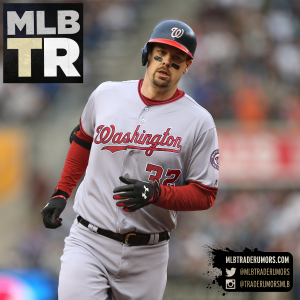Here’s the latest from Nick Cafardo of the Boston Globe:
- Alex Rodriguez recently said he is retired and does not intend to return to the game, but he tells Cafardo that his decision to leave the playing field behind was a bittersweet one. “It’s never ever out of you,” he says. “I love this game so much. When you’re out here on the grass with my uniform on, you’re always tempted to grab a bat, but I’m also happy with my life.”
- Minor-league signee Daniel Nava has a reasonable chance to make the Phillies’ roster out of camp, according to GM Matt Klentak. “He can play the corner outfield spots, first base, and he’s a switch-hitter, so he’s got a shot,” Klentak says. The one-time Red Sox outfielder batted a modest .223/.297/.292 with the Angels and Royals last season. With Tommy Joseph at first and Howie Kendrick, Odubel Herrera and Michael Saunders around the outfield, Nava could compete with Aaron Altherr, Chris Coghlan and perhaps Tyler Goeddel for spots on the Phillies’ bench.
- At last check, talks between the Nationals and White Sox regarding David Robertson were in “stalemate,” but Cafardo writes that there’s a chance they could be revived. He echoes earlier reports that the White Sox would have interest in Pedro Severino, the youngest member of the Nats’ current catcher logjam.

